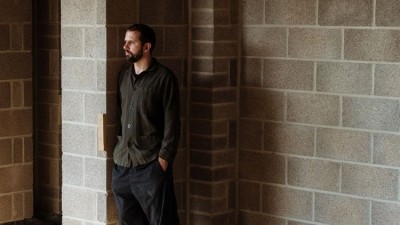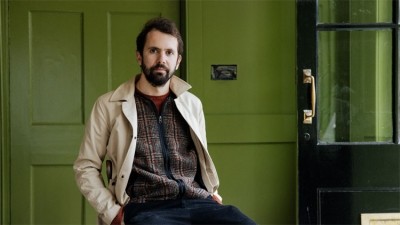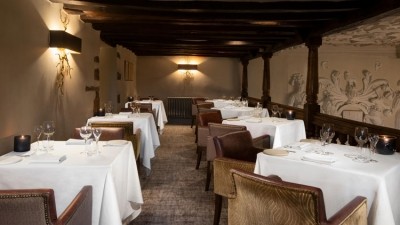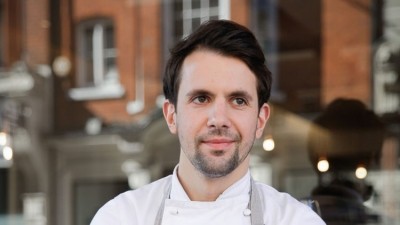Merlin Labron-Johnson: "London was a stopping point on the way to something else"
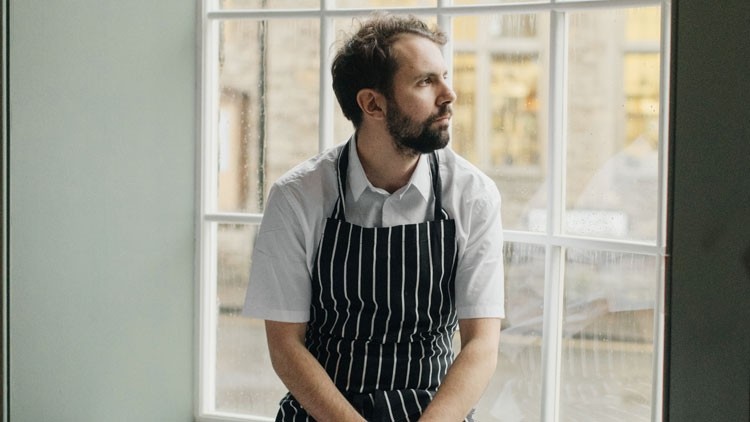
You’ve left London, what’s that all about?
I grew up in Devon and spent the whole of my life in the countryside until I came to London. Even when I was working in Switzerland, France and Belgium I was living in very rural places and that was where I felt most comfortable cooking. It always felt natural being surrounded by nature and farming, it just made sense. When I left In de Wulf [in Belgium] I thought I’d try working in the city. I had been away from England for six-and-a-half years so I thought it would be nice to reconnect with old friends. But I got carried away and accidentally opened three restaurants, which was great but it never felt like London was my permanent home, rather a stopping point on the way to something else.
Why the move to Somerset?
[In 2019] I starting thinking seriously about a move and was initially looking at places slightly closer to London. Places like Sussex and Kent, where people could come from London for lunch like they do at The Sportsman or The Fordwich Arms. But I struggled to find a suitable place. I wanted something that was in an area of outstanding natural beauty and a site that wasn’t an already existing restaurant or pub. I also wanted some land on which to grow vegetables and have some rooms, so before I even started thinking about the restaurant there was a giant renovation project, farming and a hotel to consider, which were all things I didn’t know very much about. I then got introduced to people who had found an old building in Somerset and were renovating it – it had rooms and it seemed perfect so we ended up doing a partnership. I run the restaurant side of things, which means I’ve managed to have everything I want without having to take on so much unknown responsibility.
Why did you not want to take on an existing restaurant?
I had a vision of creating a place that was really special. Most of my favourite restaurants in the world are places a little bit out of the way that, when you get there, you feel like you’ve really arrived somewhere. I wanted somewhere like that. When you take over an old pub or restaurant it’s already had a history and you have to rewrite it. You’re not building it from scratch but just making amendments to something already existing.
Describe Osip
It’s located in a tall house that used to be an ironmongers. It has four rooms above it, then there are outbuilding at the back which have been turned into rooms. We’re in the second smallest town in England – to most people it’s a village although I wouldn’t dare say that to the locals. It’s a tiny restaurant – it can do 30 covers.
Why so small?
It’s what the building dictated. If I were building a restaurant from the ground up I would make it a little bit bigger, but at the same time it’s nice having a really small set-up. I wanted people to feel like they were eating in our home. It feels very cosy. For a chef, it’s kind of cool cooking for 30 people as opposed to 60 because you can be a lot more precise. In this part of the world, filling a restaurant with 30 covers is one thing, filling it with 50 or 60 is slightly more challenging.
And the food?
I don’t like the phrase farm-to-table but it feels like the most accurate description of what we’re about. We work with a small group of local farmers that all produce things in very small quantities so we have to be incredibly flexible and creative and work with what they’ve got every day. We have a set menu for dinner that allows us to serve whatever we want – we might serve different things to different tables if we only have a small amount of something. It’s also because the kitchen is so small that cooking à la carte doesn’t work as well. We’ve built the menu around vegetables: we use a little bit of wild game and poultry but 70% to 80% of the dishes are vegetarian.
How have guests reacted to that?
When a lot of chefs do a tasting menu it’s like them saying ‘I’m a chef, I’m in charge and you have to come and worship at my altar’. The way we do it, it’s not about us, it’s about the produce and the suppliers. The local people are excited and proud to be eating the food that’s grown around here and understand the reason we’re doing it. I was worried at the start but so far it’s quite novel for them and it works. I don’t like to think of it as a tasting menu anyway, more like a selection of dishes that represent the best of what’s growing in this area at any one time.
What’s next on the horizon?
I do like to do new projects and don’t like to stand still. I’d like to build a base for myself down here and then do projects in London. The city does grind you down a little and at the moment I feel like so much is going on there, so many restaurants are opening and closing that it’s hard to envisage what a successful restaurant in London might look like. But I will do another project there; I’ve got a few ideas but I’m going to take it slow. But this won’t be my final stop, I’m sure.
This interview first appeared in the January 2020 issue of Restaurant magazine, the leading title for the UK's restaurant industry. For more features, comment, interviews and in-depth analysis of the restaurant sector, subscribe to Restaurant magazine here.
